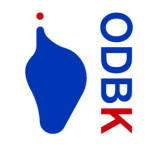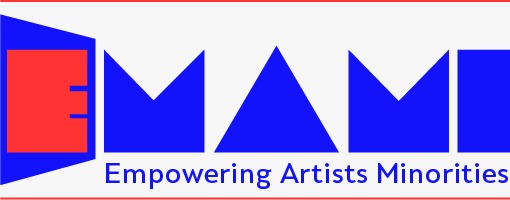How the web2 and web3 could help to create more equality and diversity in the selection of artists and artworks in contemporary art museums and art collections?
Web2 and Web3 technologies hold potential to make art more inclusive, diverse, and representative by broadening access to platforms and resources for artists from underrepresented backgrounds, enabling decentralized decision-making, and democratizing visibility and funding. Here’s how each of these technologies could contribute to creating more equality and diversity in the art world:
Web2: Social Media, Crowdsourcing, and Digital Platforms
- Global Reach and Exposure: Platforms like Instagram, Twitter, and TikTok allow artists from around the world to showcase their work without traditional gatekeepers. This enables curators and collectors to discover a wider range of artists across diverse backgrounds and styles that may not yet be represented in galleries or museums.
- Digital Art Marketplaces: Sites like Saatchi Art, Artsy, and others give artists direct access to potential buyers and audiences, making it easier for emerging artists or those from underrepresented communities to sell their work. These platforms lower barriers by eliminating the need for gallery representation, which historically could be restrictive.
- Crowdsourced Curation: Museums and galleries can use Web2 tools to involve the public in the curatorial process. Polls, virtual voting, and feedback platforms allow the audience to suggest and vote for artists or themes. For example, social media challenges or open calls let audiences influence museum exhibits, creating space for public-led diversity in art curation.
- Online Exhibitions and Virtual Access: Web2 tools have expanded the reach of art institutions through online exhibitions, tours, and talks. These virtual spaces are more accessible than physical spaces, allowing those who might not be able to visit museums in person to participate. This increased accessibility promotes broader interest and engagement with diverse artworks and artists.
- Storytelling and Advocacy: Web2 has made it easier for marginalized artists to tell their stories and gain advocates who amplify their voices. Initiatives like #BlackLivesMatter and #MeToo have had profound impacts on museum culture, pushing institutions to rethink inclusivity and representation.
Web3: Decentralization, NFTs, and DAOs
- Decentralized Curation through DAOs: Decentralized Autonomous Organizations (DAOs) can facilitate community-based curation, where members contribute to funding and voting on art acquisitions or exhibitions. This model shifts decision-making power from traditional gatekeepers to a broader community, potentially leading to a more representative selection of artists and artworks.
- NFTs and Direct Artist Support: Web3 platforms empower artists to tokenize their works as NFTs, which they can sell directly to collectors. NFTs also allow artists to retain ownership over their work and earn royalties on resales, which can help artists from marginalized backgrounds build sustainable careers. Additionally, NFTs lower entry barriers by allowing anyone with a digital wallet to become a collector.
- Funding through Cryptocurrencies and Crowdfunding: Web3-based crowdfunding platforms enable artists to raise funds for their projects without institutional support, helping level the playing field for those who lack access to traditional art funding. Platforms like Mirror and Foundation allow artists to crowdfund and gain a following by offering “membership NFTs” or other digital tokens, building loyal communities invested in their success.
- Transparency and Fair Compensation: Blockchain’s transparency allows artists to track the provenance of their work and verify ownership, which ensures fair compensation and rights attribution. Smart contracts automate royalty payments whenever the art is resold, providing continuous income to artists—particularly beneficial to emerging artists who may otherwise struggle to profit long-term.
- Global Inclusivity and Cross-Cultural Exchange: Web3 breaks geographical barriers by allowing artists from anywhere in the world to sell, exhibit, and promote their work without the need for a gallery. As a result, underrepresented and non-Western artists have a better chance to reach global audiences, fostering a more diverse art landscape.
- Experiential and Interactive Art: With the advent of virtual reality (VR), augmented reality (AR), and the metaverse, Web3 allows museums to create immersive experiences that showcase diverse cultural perspectives. These technologies can bring underrepresented narratives to life in ways that traditional mediums may not, further broadening the cultural representation in art collections.
Potential Challenges and Considerations
While these technologies have transformative potential, some challenges remain:
- Digital Divide: Access to digital tools and reliable internet varies globally, which can limit opportunities for some artists.
- Cultural Sensitivity in Decentralized Spaces: DAOs and other decentralized communities may lack sensitivity to cultural nuances or the expertise required to make fair curatorial choices, leading to tokenization rather than true representation.
- Environmental Concerns: The energy consumption associated with some blockchain networks (e.g., Ethereum pre-merge) may be unsustainable or conflict with the values of certain art communities.
- Market Volatility: The Web3 art market is still developing, and the value of NFTs can fluctuate wildly, posing financial risks for artists and collectors.
Summary
Together, Web2 and Web3 technologies offer tools that could democratize access to contemporary art spaces and challenge the status quo by giving a broader range of artists the chance to participate. Web2 can drive awareness and engagement through accessibility and social interaction, while Web3 can transform ownership and compensation structures to be more equitable. By embracing both, museums and art institutions have an unprecedented opportunity to build collections and exhibitions that reflect the true diversity of global artistry.

